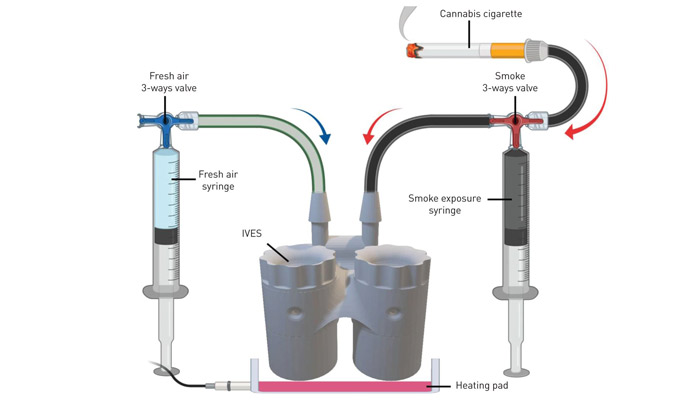Open-source 3D Printing Measures the Impact of Cannabis on Lungs

Scientists at Canadian McMaster University and the University of Waterloo recently used 3D printing to look at the impact of cannabis on human lungs. In order to do this, they created an open-source 3D printed device that “breathes” like a lung. By making this device inhale smoke as a lung would, the team were able able to observe the consequences. This device is an in vitro exposure system (IVES), which could raise questions about the legalization of drugs for therapeutic purposes.
Additive manufacturing and cannabis are not a new duo in the sector. Many researchers and companies are indeed interested in this plant- within a medical context, of course. Cannabis is rich in hemp, which can in turn be exploited for its medicinal properties. Syqe Medical, for example, developed a medical cannabis inhaler using 3D technologies to ensure better dosage. Hemp is also sometimes used in composite 3D printing materials, usually blended with PLA.

The system devised by the researchers.
This time around, the team of researchers in question sought to understand the impact of cannabis use on our epithelial cells. Present in all our organs, these act as protective walls to protect the body from all outside germs. Scientists say they have developed a IVES with Formlabs‘ Form 2 3D printer. This device has 4 exposure chambers, with two inlets, four outlets and four plugs. The principle seems relatively simple: the system inhales smoke through one of the inlets, distributes it in the 4 chambers loaded with epithelial cells, and comes out. The researchers explain that they modeled their system using Autodesk Inventor software and printed it with Formlabs clear resin.
After performing several tests, the team realized that the autoimmune function of the epithelial cells exposed to the smoke was damaged. Scientific research has shown that the lack of this barrier in the body can cause serious respiratory problems in humans. Obviously, we suspected the potential harmful effects of smoking cannabis, but this 3D printed device offers a more concrete depiction of the consequences. Today, the existing in vitro test models are often expensive and unreliable as they lack precision. Thanks to 3D printing, more laboratories and institutes are able carry out more in-depth tests and repeat them as many times as necessary.

The open-source 3D printed device
The researchers conclude: “The growing legalisation of cannabis on a global scale must be paired with research related to potential health impacts of lung exposures. IVES represents an accessible, open-source, exposure system that can be used to model varying types of cannabis smoke exposures with human airway epithelial cells grown under air–liquid interface culture conditions.” You can find the entire study HERE .
* Photo credits: InfoCBD
What do you think of the use of 3D printing in this project? Let us know in a comment below or on our Facebook, Twitter and LinkedIn pages! Sign up for our free weekly Newsletter here, the latest 3D printing news straight to your inbox!






